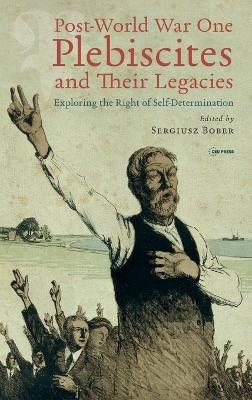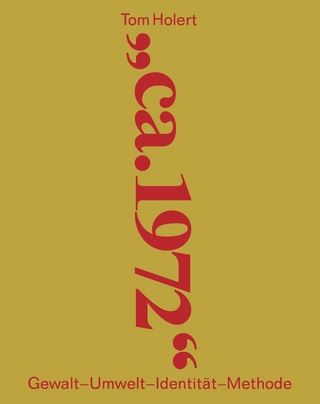
Post-World War One Plebiscites and Their Legacies
Central European University Press (Verlag)
978-963-386-610-8 (ISBN)
The contributors to this edited volume approach the referendums comparatively. After grounding the analysis theoretically, the authors look at detailed aspects of individual cases, with the two plebiscites held in the Danish-German border region of Schleswig in the winter of 1920 as points of departure. They then extend the exploration through the inter-war period and address the effects of border delimitations on everyday life or gender roles in the context of ethnic mobilization. Finally, the book places the post-World War One plebiscites in a long-term perspective. The concluding essays assess, among others, the applicability of plebiscitary solutions to contemporary conflicts, taking into consideration issues of borders, religion, language, identity, and minority rights.
Sergiusz Bober is Senior Researcher at European Centre for Minority Issues (ECMI).
List of Figures and Tables
Introduction: Between Plebiscites, Difficult History, and Minority Rights
Sergiusz Bober
PART I.: The Right to Self-Determination and Plebiscites
Chapter 1. Schleswig Safe for Democracy? A Comparative Perspective on Right-Sizing Referendums
Matt Qvortrup
Chapter 2. Plebiscites and the Difficult Transition to Peace after the First World War
Volker Prott
PART II.: Plebiscites and Minority Rights in the Aftermath of the Paris Peace Conference
Chapter 3. Where is Schleswig? Danish, German, and International Conceptions of the Schleswig Plebiscite
Ryan J. Gesme
Chapter 4. Principles and Politics: Flensburg and Klagenfurt in the Plebiscites of 1920
Peter Thaler
Chapter 5. Visions of Legal and Substantive Citizenship and the League of Nations’ Minority Treaties
Kristin Henrard
PART III.: Post-Plebiscitary Territories as Living Spaces between the Two World Wars
Chapter 6. Fabricating a Border: The Sopron Plebiscite of 1921 and the Delineation of Burgenland
Béla Rásky
Chapter 7. “Here at the Bleeding Eastern Border, One Could See the Injustice”: July 11, 1920, in the Public Conscience and the Regierungspräsidium of Marienwerder until 1939
Harald V. Keudell
Chapter 8. A Gendered View on the Plebiscitary and Post-plebiscitary Carinthian Slovene Minority: Roles and Realities of Women
Tina Bahovec
PART IV:: The Post-World War I Plebiscites in the Longue Durée
Chapter 9. Plebiscites, Minorities, and the Right of National Self-determination—Some Lessons from 1920
Martin Klatt
Chapter 10. Militarized Plebiscite? The Legacy of the 1920 Carinthian Plebiscite
Robert Knight
Chapter 11. About Sèvres, Lausanne, the Widow Molla Sali, and the Ineffectual Attempt of Greece to Circumvent the Principles of the Framework Convention for the Protection of National Minorities
Detlev Rein
Concluding Chapter
“Why Not Hold a Plebiscite like in Schleswig?” The Significance of Plebiscites in Solving Nationality and Border Conflicts in Europe since World War I
Jørgen Kühl
List of Contributors
Index
| Erscheinungsdatum | 21.05.2024 |
|---|---|
| Zusatzinfo | 3 Tables, black and white; 8 Figures |
| Verlagsort | Budapest |
| Sprache | englisch |
| Maße | 152 x 229 mm |
| Gewicht | 556 g |
| Themenwelt | Geschichte ► Allgemeine Geschichte ► Zeitgeschichte |
| Sozialwissenschaften ► Politik / Verwaltung ► Politische Systeme | |
| Sozialwissenschaften ► Politik / Verwaltung ► Staat / Verwaltung | |
| ISBN-10 | 963-386-610-3 / 9633866103 |
| ISBN-13 | 978-963-386-610-8 / 9789633866108 |
| Zustand | Neuware |
| Haben Sie eine Frage zum Produkt? |
aus dem Bereich


